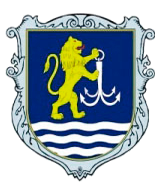IMPROVING THE TANKER PROJECT RST27 SHIP POWER PLANT PERFORMANCE BY HYDROGEN ADDITIVES USAGE
Abstract
Introduction. Given the current state of technology, further increase in engine efficiency has little effect, but the use of alternative fuels is an opportunity to increase the efficiency and environmental friendliness of modern engines. Today, marine engines use HFO (“heavy fuel”), diesel and gaseous fuels as fuel. Purpose. Using modern technologies for the use of fuel additives and alternative fuels, it is proposed to modernize the fuel system of marine engines of the tanker project RST27. Results. It is proposed to use a system of small additions of hydrogen to the main fuel. As a result of using this technology, it is proposed to install a modern electrolyzer and hydrogen storage system in a metal hydride battery. The application of hydrogen impurities on the 6L20 main engine manufactured by “Wartsila” was simulated. The scheme of equipment location in the engine room and the scheme of the fuel system of the ship’s power plant are presented. According to the simulation results, the effective engine power increased by 3,1 %, and the specific effective fuel consumption decreased from 195 to 191 g/(kWh). At the same time there is no need for significant re-equipment of both the engine room and the main engine. The electrical energy required for hydrogen production can be used during the partial operation of diesel generators, in the parking mode, and during the transition. Conclusions. The economic effect of the implementation of this scientific and technical solution is obtained through the use of small impurities of hydrogen to the main fuel and reduce fuel consumption by engines of the power plant of the tanker project RST27. According to preliminary estimates, the economic effect will be up to 200 USD per day, which in terms of one crossing on the Egypt – Ukraine route will be more than 1500 USD taking into account the cost of hydrogen.
Downloads
References
2. Утилизация теплоты вторичных энергоресурсов судовых малооборотных двигателей, работающих на альтернативном топливе / М. Р. Ткач, Б. Г. Тимошевский, С. М. Доценко, Ю. Н. Галынкин, Д. О. Шалапко. Двигатели внутреннего сгорания. 2017. № 2. С. 8–13.
3. Тимошевський Б. Г., Ткач М. Р., Шалапко Д. О. Основні положення математичної моделі додавання водню на лінії високого тиску паливної апаратури. Вісник Херсонського національного технічного університету. 2017. № 3 (62). Т. 1. C. 233–237.
4. Shalapko D. O. An experimental study of the wave effect in fuel equipment using hydrogen additives to diesel fuel. Technology audit and production reserves. 2018. Vol. 6. № 1 (44). P. 36–40.
5. Methods to improve the performance of diesel engines by adding hydrogen into high pressure line / M. R. Tkach, B. G. Tymoshevskyy, D. O. Shalapko, A. Yu. Proskurin, O. M. Mitrophanov. Shipbuilding & marine infrastructure. 2018. Вип. 1 (9). С. 87–91.
6. Шалапко Д. О. Непрямі методи дослідження ефекту використання малих домішок водню до основного палива. Авиационно-космическая техника и технология. 2018. № 6 (150). С. 44–51.
7. Правила технической эксплуатации морских и речных судов. Дизели. КПД 31.2.002.02-96: нормативный документ морского транспорта Украины. Киев, 1997. 64 с.
8. L20 IMO Tier II – Marine Engines PRODUCT GUIDE. Wartsila, November 2018. 228 p. URL: https://www.wartsila.com
9. Танкер проекта RST27: основные характеристики, назначение и техническая документация (2011). Smart Maritime Group. URL: https://smart-maritime.com/ru/reference-list/tankery/proekt-rst27/
10. HySTAT® HYDROGEN GENERATORS. Oevel, Belgium, 2017. 16 p. URL: https://www.hydrogenics.com





